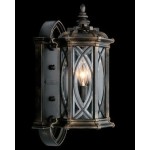
You are about to install fresh laminate in your house? But how are you going to cut it? Our quick guide highlights all the important features the best saw blade for laminate flooring must have to help you with your flooring project. Ready? Let’s start!
Choosing The Right Blade for Laminate
Cutting laminate isn’t the easiest DIY project out there, so you can’t just go with any saw blade. Below are the main factors you should consider to make the right choice.
- Material – choosing the right material is one of the most important steps in choosing a blade for your laminate project. Cutting laminate requires extra durability and precision, so it’s highly recommended to consider blades with diamond or carbide tips. These materials are more resistant to friction and overheating than average metal tips, so they are more suitable for batching laminate for the entire house.
- Compatibility – it’s necessary to consider your circular saw type to get a suitable blade. Of course, there are many blade models that are compatible with miter, table, and handheld circular saws at the same time, but you should check out the recommended tool anyway.
- Teeth – cutting laminate requires blades that have an above-average number of sharp teeth to let you achieve the smoothest cuts possible without overheating. We recommend purchasing blades with at least 50 teeth, but the more, the better. The best blades come with 80 carbide-tipped teeth for the smoothest cuts.
- Arbor size – both handheld circular saws and miter saws have an arbor located on a shaft in the center. You need to figure out what arbor size your particular saw model has and look only for those blades that have the same arbor marking. Otherwise, a blade simply won’t fit. In most cases, 3” blades come with ¼” arbor holes, 6” blades come with ½” arbor holes; 7”-10” come with ⅝” holes, and 12”-16” require the largest 1”+ holes. Most blades have the arbor size marking right on the surface. If not, check out the description on the product page.
- Blade size – the optimal blade size for cutting laminate varies from 10” to 12”. Smaller blades will heat more and take more time to cut. If you have a large powerful miter saw, you may also opt for blades of 14” and 16” for faster cutting.
- Kerf – the rule of thumb is to buy a blade that has the thinnest kerf as it will let you make the fines cuts and reduce the amount of wasted material. Besides, thin-kerf blades don’t chip the material as much as thick ones. They are also much more precise and make it easier to aim.
- Expansion slots – expansion slots are there to prevent quick overheating of the blade and reduce blade flexing when it gets hotter. That’s why you should look for those models that have the widest expansion slots.
- Blade coating – non-coated blades are significantly less sturdy than the coated ones. The coating layer also serves as a friction reducer and scratch protector. Such blades serve longer and get hot slower.
- Vibration level – if a manufacturer claims that the blade has a low-vibration design, you should prefer it to a blade that doesn’t have it. The lower the blade vibration level is, the smoother cuts you will make.
- Cost – in the case of circular saw blades, more expensive models are usually much more durable and have more useful features. As you have to choose between carbide and diamond-tipped models, the first type is cheaper but still offers great cutting quality.
Cut It!
Now that you know everything about laminate blade specs, you can get straight to your project and achieve the best quality of cuts. Was this guide helpful enough, or do you still have questions? You’re welcome to ask in the comments.




